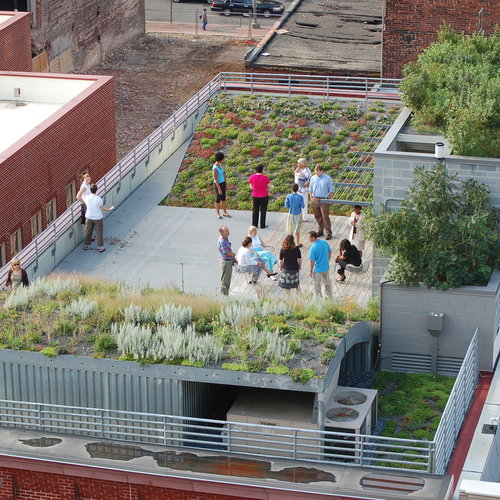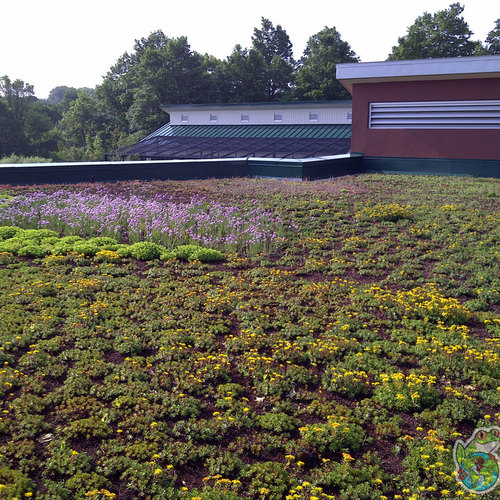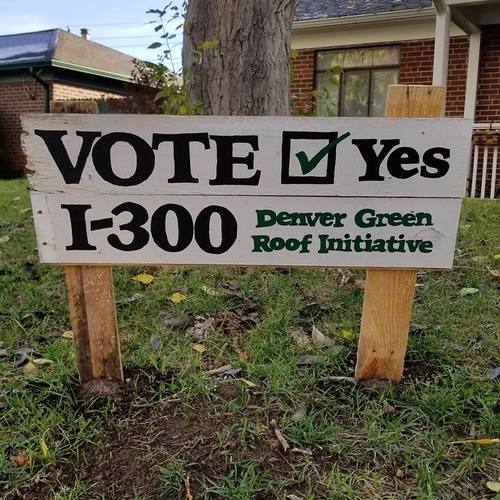
The city of Denver has rewritten a voter-backed plan that would have required vegetative roofs on large commercial buildings.
Instead of forcing owners to install rooftop gardens, the City Council voted late last month to require cool, reflective roofs on new buildings greater than 25,000 square feet, and on buildings of that size when they are re-roofed, The Denver Post reported.
The green roof campaign was a citizen initiative that won voter approval last November. Backers campaigned for the new rules as a way of reducing what’s called the urban heat island effect and controlling storm water runoff. The plan, which won 54% of the vote over objections from business leaders and the mayor, became the toughest ordinance of its kind in the U.S.
But in May, as a city charter provision barring changes in citizen initiatives was expiring, a task force began working on a rewrite that would allow greater flexibility in applying the rules and lower costs for building owners. The revised rules also require building owners to meet other conditions, including the installation of green space, meeting green design standards, or installing a photovoltaic (PV) array.
Higher development costs were a major concern, particularly on older buildings that were not engineered to support the additional weight of rooftop gardens. Research by the city suggested that the vegetative roof ordinance would add $193,000 to the cost of building a five-story office building, 2.8% of the total. The revised plan will cut those costs at least in half, The Post said.
The original proposal calling for vegetative roofs was patterned after a similar plan in Toronto, but a number of cities have embraced the cool roof approach as a way of reducing summer temperatures and reducing greenhouse gas emissions. A group called the White Roof Project, which is promoting the idea, claims a variety of benefits from reflective roofs, including lower indoor and roof temperatures, less smog, and savings of up to 40% for electricity.
Brandon Rietheimer, who led the ballot initiative and later served on the task force that wrote new rules, said he supported the revisions.
But Kyle Zeppelin, a developer who preferred the vegetative roof option, said that the cool roof plan wouldn’t offer the same benefits. He said the original plan would have forced developers, who are “making money hand over fist,” to help pay for a needed increase in permeable landscaping in the city.
The change also was criticized by Ellen Thorp, the head of the EPDM Roofing Association, who argued that cool roofs can lead to the accumulation of moisture in the roof assembly in colder climates and can increase heating bills.
Weekly Newsletter
Get building science and energy efficiency advice, plus special offers, in your inbox.















One Comment
The climate in Denver is "DRY", when they get rain - they can get a lot, when it snows they can get a lot, but for most of the time the skies are clear. Dry climates can clobber the vegetation on the green roofs UNLESS there is additional water being used to keep them green. Dormant brown vegetation on a roof top can become a fire hazard. Green roof tops in very dry climates do not mean that you are saving energy, improving air quality... wrong solution for the problem in that location.
Meanwhle just a few miles from Denver, researchers at Colorado University have demonstrated new metamaterials on the roof top of their lab building that are able to radiate heat from a building... even in the hotest point of the day. E.g, lay down white roof, put panels of the radiators on the roof that can CHILL water by simply radiating the heat from the water loop into the sky -- even during the daytime. The demonstrated a 20F drop in the water temp (closed loop water panels) by using the radiators.
https://www.colorado.edu/today/2017/02/09/newly-engineered-material-can-cool-roofs-structures-zero-energy-consumption
https://www.sciencedaily.com/releases/2018/10/181026114627.htm
The green roof solution would have effectively locked out better long term solutions to the cool roofs and cooling needs of the buildings.
Log in or create an account to post a comment.
Sign up Log in